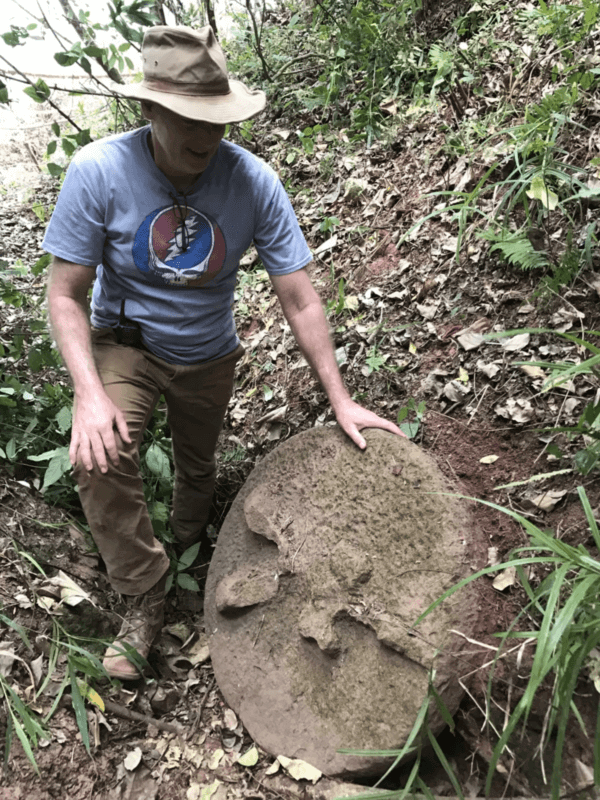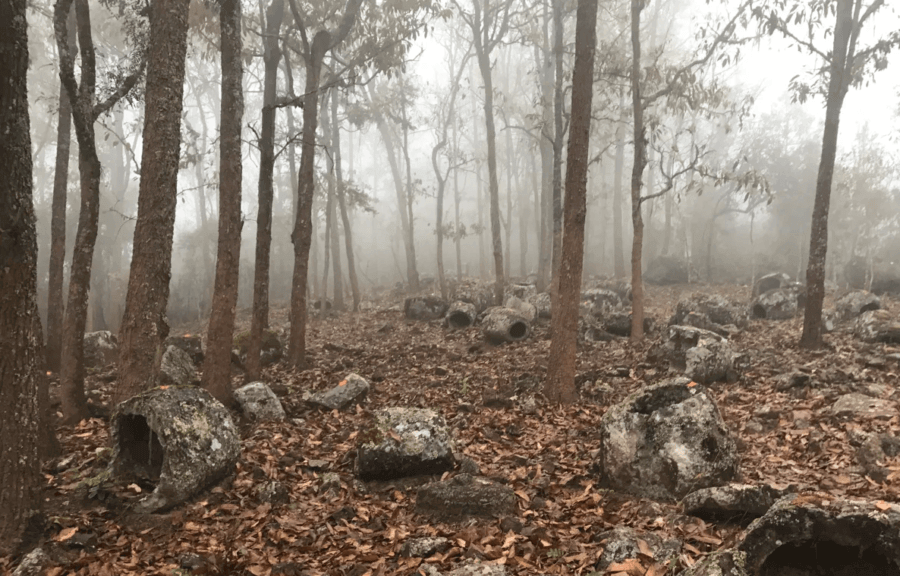Imagine hiking through the dense, remote forests of Laos, miles away from civilization. The air is thick, the path is treacherous, and suddenly, you stumble upon a giant stone jar towering over you. Not just one, but hundreds of them, scattered across the land like ancient sentinels, silently guarding a mystery that has baffled researchers for years.
Thank you for reading this post, don’t forget to subscribe!That’s exactly what happened to a team of archaeologists from the Australian National University (ANU). They recently discovered 15 new sites, uncovering 137 of these enormous stone jars in Laos. The find is part of an ongoing quest to unlock the secrets of the so-called “Jars of the Dead.”
What Are The Jars of the Dead?
These aren’t your typical archaeological finds. The jars, believed to be over 1,000 years old, stand in remote forests and mountains. They are massive—some weighing several tons—and were somehow transported from quarries miles away. And what were they for? Well, that’s the million-dollar question.
For years, researchers have puzzled over these jars. Were they graves? Did they hold cremated remains? Or were they used for something else entirely? No one knows for sure. But what we do know is that these jars were important enough to be carefully placed in these specific locations, even though no signs of human habitation have ever been found nearby.
A Mysterious Discovery
Nicholas Skopal, a PhD student at ANU, led the latest expedition with help from the Laotian government. According to Skopal, these areas had only been visited by the occasional tiger hunter before the team arrived. Now, with the discovery of these new sites, researchers are hoping to piece together a clearer picture of this ancient culture and how it treated its dead.
“We’ve rediscovered them, but the mystery remains,” Skopal said.
The jars themselves weren’t the only oddities. The team also found small, intricately carved discs buried face down next to the jars. What makes these discs even more perplexing is that some feature animal imagery, while others have geometric designs. Why the different patterns? And why were they buried face down? Your guess is as good as anyone’s.
Mini Jars And More Artifacts
But wait, there’s more. Alongside the giant stone jars, researchers unearthed miniature versions made out of clay. These tiny jars were buried inside the large ones, possibly with the bodies they were meant to entomb. If that wasn’t strange enough, other artifacts, like glass beads, iron tools, and spindle whorls used for making cloth, were also found within the burial pits.
It’s as if each jar tells its own story, but we just don’t have the key to unlock it.

The Danger Lurking In The Plain of Jars
The Plain of Jars, the most famous site where these mysterious jars are located, isn’t just a puzzle for archaeologists—it’s a literal minefield. Between 1964 and 1973, the U.S. dropped over two million tons of bombs on Laos during what’s now called the Secret War. Up to a third of those bombs didn’t explode. To this day, unexploded bombs still dot the landscape, making it one of the most dangerous archaeological sites in the world. Over 20,000 people have been killed or injured by these deadly remnants since the war ended.
Virtual Reality to the Rescue
To avoid risking lives, another team of researchers at Monash University in Melbourne took a different approach. They created a virtual reality simulator, called CAVE2, that offers a 360-degree, immersive experience of the Plain of Jars. This way, archaeologists can study the site from the safety of a lab, without worrying about triggering an old bomb.
Connections Across Continents?
Interestingly, similar jars have been found in places like India and Indonesia. Could there be a prehistoric connection between these regions? Dougald O’Reilly, a professor from ANU who co-led the Laos expedition, thinks it’s worth investigating. According to him, the jars are “more widespread than previously thought,” hinting at a possible cultural link between these distant regions.
The Unanswered Questions
So, what were these giant stone jars really used for? Why were they placed in such remote, dangerous locations? And who were the people behind them? Right now, the answers remain as elusive as ever.
But one thing’s for sure—the discovery of these new sites brings us one step closer to solving a mystery that has lasted for centuries. Whether it’s a burial site, a place for rituals, or something else entirely, these jars have captured our imagination. And until we find the answers, they’ll continue to stand silently in the forests of Laos, keeping their secrets safe.
Conclusion: A Mystery Waiting to Be Solved
As we keep uncovering more of these ancient jars, we get closer to understanding a forgotten civilization. It’s exciting, it’s inspiring, and above all, it reminds us just how much there is still to learn about our world. Maybe one day, we’ll unlock the full story behind these jars. Until then, the “Jars of the Dead” will remain one of history’s most intriguing puzzles.
For now, I can’t help but feel a sense of awe. Imagine the work and dedication it took to create these jars, to transport them across miles of rugged terrain, and to carefully place them in these remote locations. It’s mind-blowing. But until we figure out the “why,” the mystery will continue to spark our curiosity.

